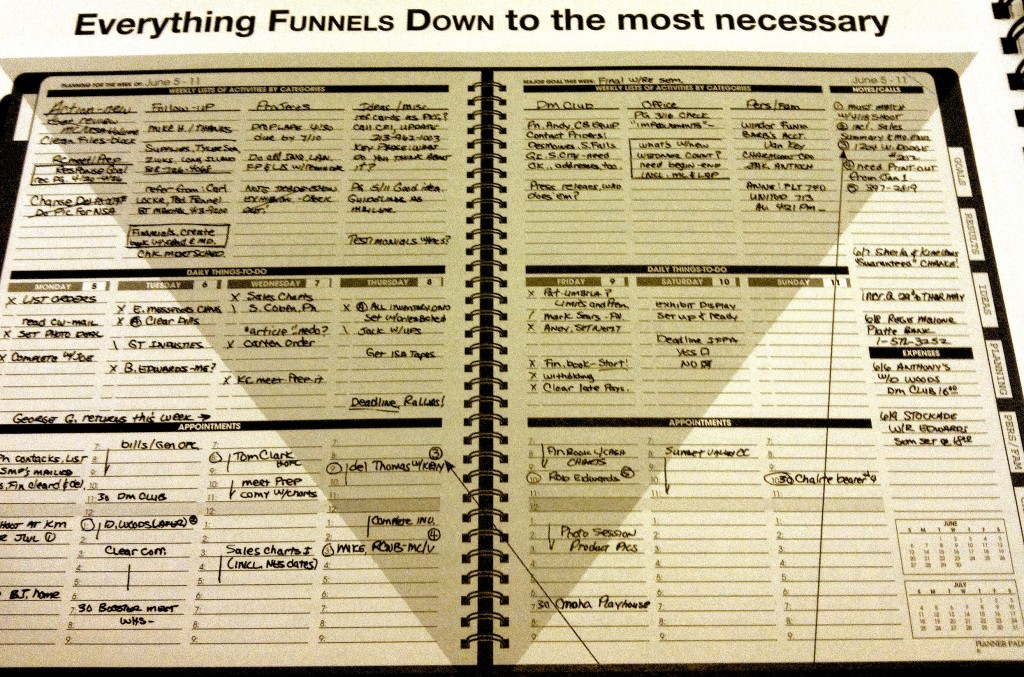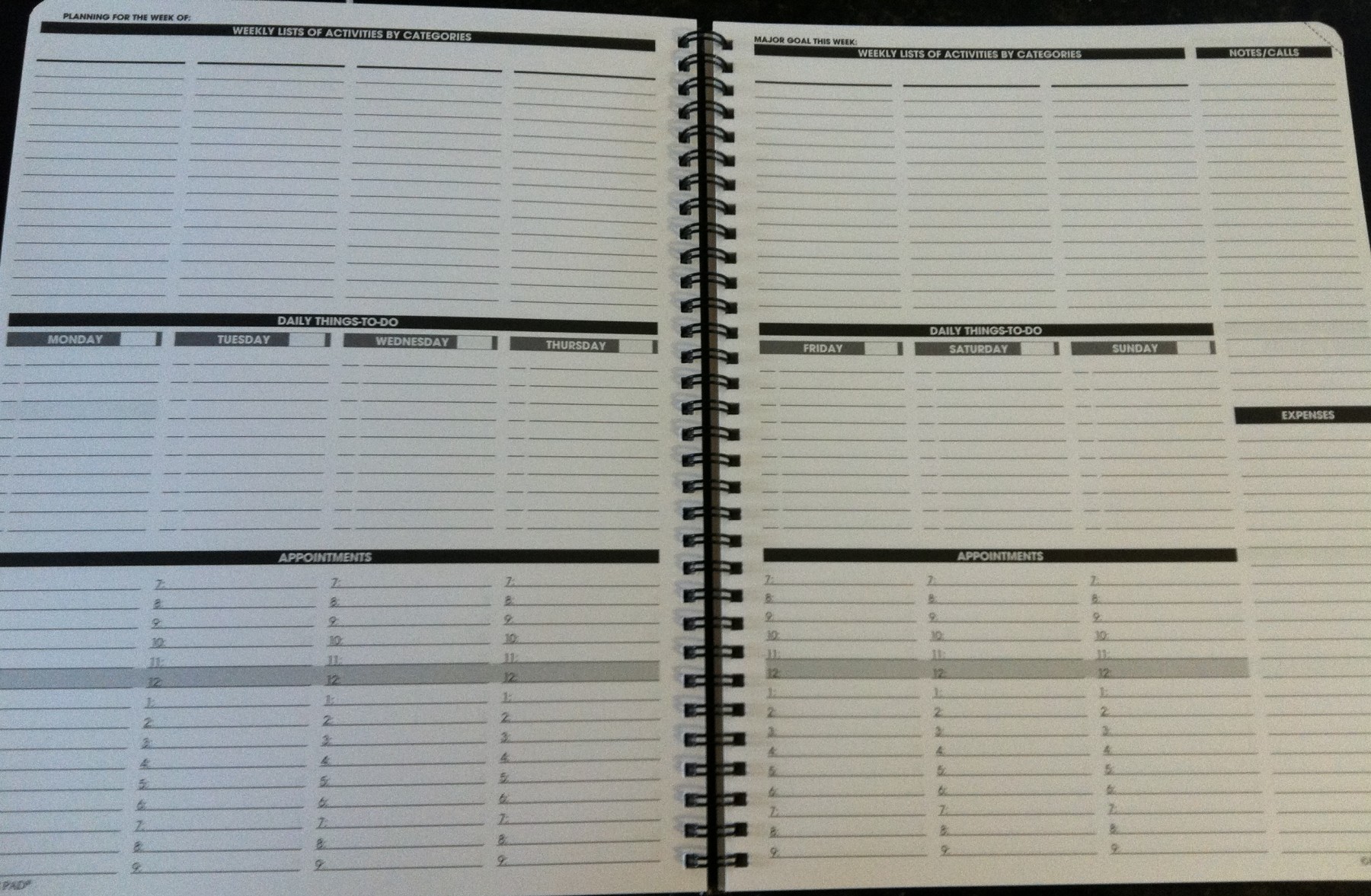
A few months ago, I hit an important milestone—I began my second Planner Pad. This event marked one year since I’d adopted the Planner Pad task management system, and I’m not exaggerating when I say it changed my life.
I’m the kind of person who will write things like “make to do list” and “eat breakfast” on my task list, just to give myself the pleasure of marking them off. Writing and rewriting my to do list had become a form of procrastination. I needed a better approach.
I tried digital tools like Things, Wunderlist, and Workflowy, but none of them could properly replicate the little surge of happiness I felt when scratching tasks off the little lists I’d write on sticky notes and scraps of paper. I also don’t like having to open programs or type, click or toggle to look at my list, and I’m not too keen on having to be online to view my tasks.
So when my friend Helen told me about the Planner Pad, I immediately ordered one. (The Undated, Professional Size, Start Anytime edition, in case you’re wondering.) Don’t be fooled by the amateurish Planner Pads website, which looks like it hasn’t been updated since about 1995.
What makes Planner Pad so brilliant is its funnel system. I think of it as the funnel of focus.
Open up the PP, and you can look at a week at a time, laid out on two pages. These pages are organized in a system of blank lists organized into rows and columns. The top row of each week provides 7 columns of 14 rows. These are your task lists. The PP website calls this top row of task lists the “Project Warehouse.”

The middle row provides ten rows for each day—your daily to do list. This is where you prioritize your tasks for a given day. The third and final row is the appointment section, which provides a line for each hour of the day starting at 7:00 a.m. and ending at 9:00 p.m. On the far column to the right of each week you get two more longer columns titled “notes/calls” and “expenses.” I use one of these to keep a running list of my deadlines and the other to take notes or list goals or scribble ideas I want to keep track of that week.
I organize my top row master task lists into categories such as “contact,” “report,” “write,” “pitch,” and “tasks” (things like paying bills, filing invoices and updating websites), and sometimes when I have a large project I’ll give the project its own task list too.

Each day, you funnel items from these master task lists into your daily to-do list. You don’t have to put everything you ever need to do on your daily list, because you can organize and keep track of these items in your “project warehouse” on the top row. Recently, I started a new category, “important but not urgent” to keep track of the things that really matter, but lack the urgency I usually need to prioritize them. I make a goal of spending at least a few hours each week ticking off items from this list.
The brilliant thing about the daily to do list is that it has only ten lines, which means that you cannot commit yourself to doing more than ten things. At first, I thought ten lines weren’t enough, but over time, I’ve learned that ten things are often too many. The to-do lists I’d been making were way too long; I was setting myself up for failure. Now, I take a minimalist approach. I set myself up for success by aiming to create daily lists that I can finish, and I measure my success by whether or not I’ve crossed everything off the list by the end of the day. As a result, my daily to-do list has grown much shorter.
When I first started with the PP, I used the bottom “appointments” column only for tracking scheduled interviews and meetings. But over time, I’ve found that if I schedule the items on my daily to do list, I force myself to be realistic about what I can actually accomplish. If I can’t fit my ten daily items into the schedule, then they aren’t going to get done, and I need to move some to another day.
The hourly to do list also helps me deal with the paralysis that can grip me when I feel overwhelmed by deadlines and tasks. If I’ve scheduled my day, I don’t have to look at a list of 20 things, I just have to look at the column that tells me what I need to do right now. When I have something to do that I know I’m inclined to avoid (such as writing a first draft), I’ll schedule a chunk of time specifically for that, then reward myself by scheduling something pleasant (“go for a run”) afterward.
At the end of each work day, I fill in my daily task list and appointments for the next day, and at the end of each week, I begin a new master task list on the new week by transferring any tasks left on the previous week’s list and adding any new ones that need doing. This weekly ritual gives me a chance to look over what I got done and what I didn’t, and helps me plan for the longer range.
The Planner Pad also includes a two page, year-at-a-glance calendar where you can sketch out long-term projects. I’ve only recently started using this feature, and I also ordered the Planner Pad’s laminated dry erase wall calendar for yearly planning. I hope that this wall calendar can do for my long-term planning what the Planner Pad has done for my day-to-day time management.

Christie Aschwanden is an award-winning writer whose work has appeared in dozens of publications, including The New York Times, The Washington Post, O, the Oprah Magazine, Mother Jones, Health, Skiing, Runner’s World, Men’s Journal, National Wildlife, Reader’s Digest, and New Scientist. She was a National Magazine Award finalist in 2011, and she blogs with some science writer friends at The Last Word on Nothing. She lives in western Colorado. Follow Christie on Twitter @cragcrest.


